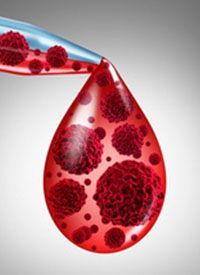Abatacept Reduces Graft Vs Host Disease, Prednisone Use Following Stem Cell Transplant
Abatacept significantly reduced steroid-refractory chronic graft versus host disease and the use of prednisone following allogeneic hematopoietic stem cell transplantation.

Abatacept (Orencia) significantly reduced steroid-refractory chronic graft versus host disease (cGVHD) and the use of prednisone following allogeneic hematopoietic stem cell transplantation (HCT), according to phase 2 findings (NCT01954979) presented at the 2022 Tandem Meetings.1
“Abatacept was associated with a 58% overall response rate in steroid-refractory cGVHD,” said lead author Anita G. Koshy, MD, a clinical fellow in medicine at Beth Israel Deaconess Medical Center. “There was a durable reduction in prednisone dosing over time, severe infections were uncommon, and the infusions were well tolerated. Correlative immune studies are ongoing to better understand the mechanism of action of abatacept and chronic GVHD.”
Investigators defined steroid-refractory cGVHD as persistent signs and symptoms of cGVHD despite the use of 0.5 mg/kg daily prednisone for at least 4 weeks.
Thirty-nine patients who had undergone HCT a median of 43 months prior to the study received abatacept and 36 were evaluable for overall response rate (ORR). Eighteen patients had moderate cGVHD at baseline and 21 had severe cGVHD. Patients received a median of 5 (range, 1-11) previous treatments for cGVHD.
Investigators administered 10 mg/kg abatacept every 2 weeks for 3 doses. One month after administration of the third dose, patients received 3 additional doses every 4 weeks. One month later, patients received the sixth dose of abatacept.
Koshy and her colleagues assessed patients for response 1 month after administration of the sixth dose and observed an ORR of 58%. All responses were partial.
Patients who completed 6 doses of abatacept and continued to demonstrate response were eligible to receive up to 12 additional doses.
At baseline, skin (84%) was the most common site of cGVHD, followed by joints (82%), eyes (72%), lung (56%), mouth (44%), liver (23%), and gastrointestinal (GI) tract (15%).
“The most improved organ sites included the skin in 22% of patients, the mouth in 22% of patients, the eyes in 25% of patients, lung in 36% of patients, and joints in 22% of patients,” Koshy said. “Progression of disease occurred in 33% of patients and included organs such as the skin, mouth, eyes, liver, lung, and joints.”
Rate of cGVHD declined to 8% in patients with GI involvement.
Koshy added that abatacept led to a durable reduction in prednisone use. At baseline, the median daily dose of prednisone 20 mg per day. “There was a 27.5% reduction in the prednisone dose to 14.5 mg by the 1 month follow up time point,” she said.
At the 4-month follow-up, prednisone dose further declined to 10 mg per day.
Eligible patients had received allogeneic bone marrow or stem cell transplantation with myeloablative or reduced intensity conditioning regimens. They had to be at least 100 days removed from transplantation or donor lymphocyte infusion to enroll.
Patients were not allowed to change immunosuppressive medications for at least 4 weeks prior to enrollment and had to be on a stable immunosuppressive regimen for 2 weeks prior to enrollment.
The median patient age was 62 years (range, 25-77) and most patients were female (53.8%). The majority of patients had an ECOG performance score of 1 (69.2%) or 2 (28.2%). The most common sites of primary disease were acute myeloid leukemia (46.2%), myelodysplastic syndrome (20.5%), and acute lymphoblastic leukemia (12.8%).
The majority of patients (89.7%) received peripheral blood stem cell transplantation. The remainder underwent bone marrow transplant.
For conditioning intensity, 61.5% of patients received myeloablative conditioning while 35.9% received nonmyeloablative.
Just over half (56.4%) of patients received matched unrelated human leukocyte antigens (HLA) and 38.4% received matched related HLA. One (2.6%) patient each received mismatched related and mismatched unrelated HLA.
The most common grade 3/4 adverse event possibly related to abatacept treatment was neutropenia in 4 patients. Investigators observed serious grade 3/4 lung infections in 3 patients. One patient experienced grade 4 hemolysis, respiratory failure, and hepatic failure, and eventually died of concurrent HSV hepatitis while on treatment.
“Immune correlative studies are ongoing to help us better understand the mechanism by which abatacept may work in the treatment of cGVHD,” Koshy said in conclusion. “Thus far, T cell polarization assessments by flow cytometry have shown no difference in [interleukin] 10 and interferon gamma expression by CD4-positive T cells before and after treatment in our clinical responders. However, cytokine profiling of patient plasma and single cell RNA sequencing are currently underway to help us to better understand changes to the immune microenvironment potentially caused by abatacept.”
Reference
- Koshy AG, Kim HT, Stroopinksy D, et al. Phase II clinical trial of abatacept for steroid-refractory chronic graft versus host disease. Presented at: the 2022 Transplantation & Cellular Therapy Meetings; Salt Lake City, UT; April 23-26, 2022. Abstract 32.



